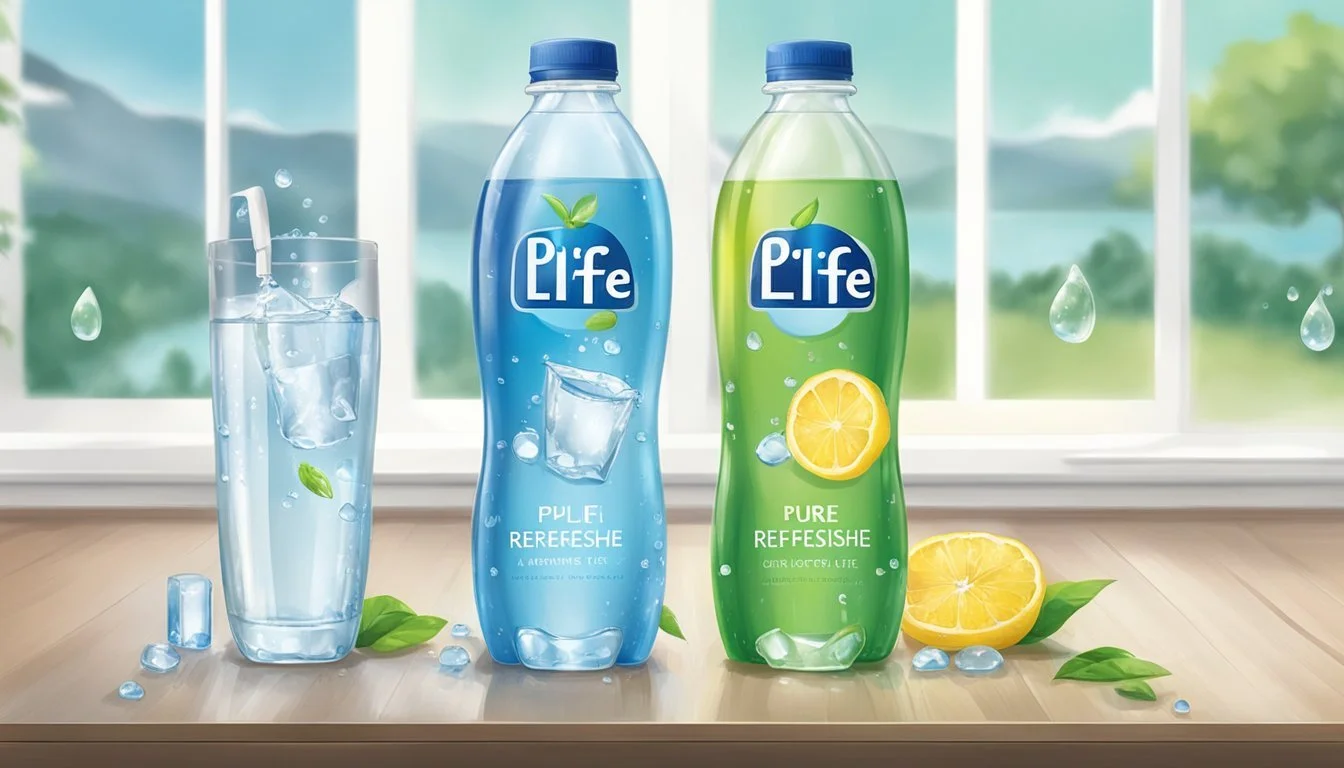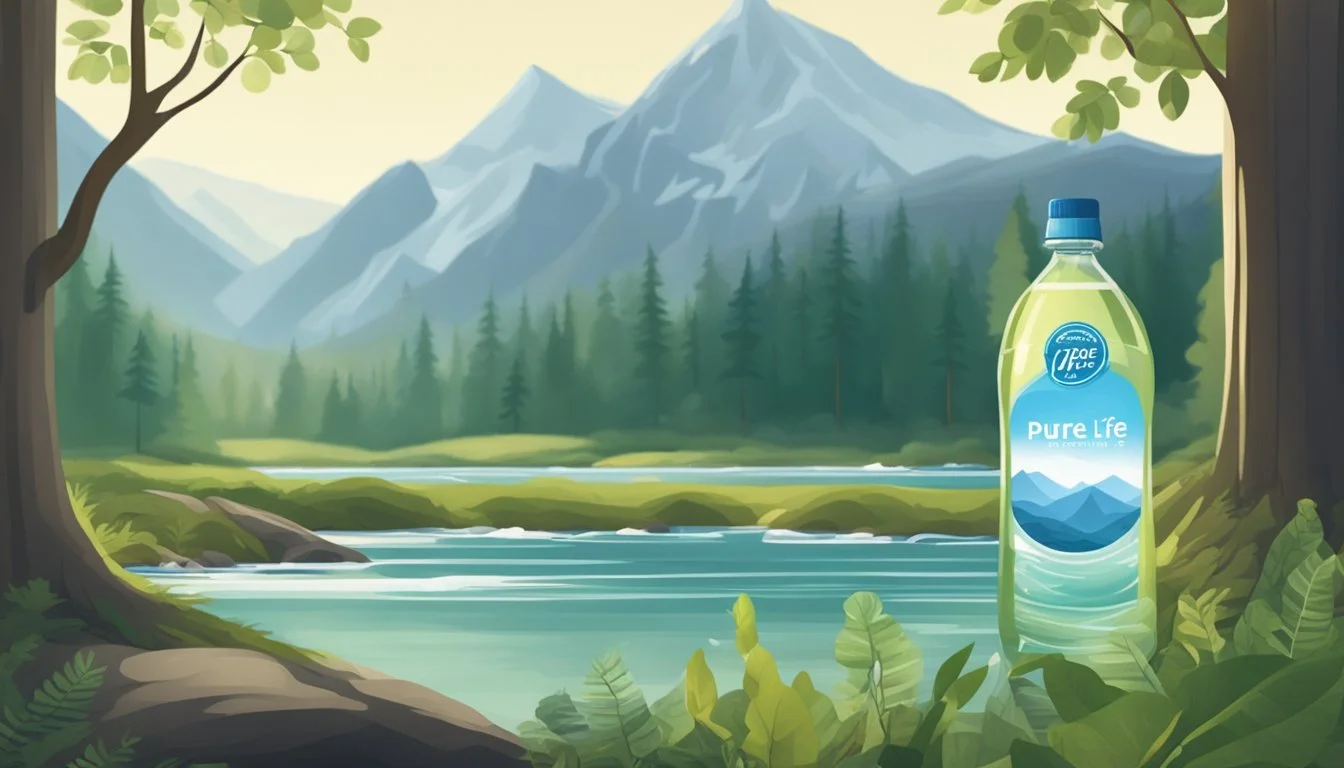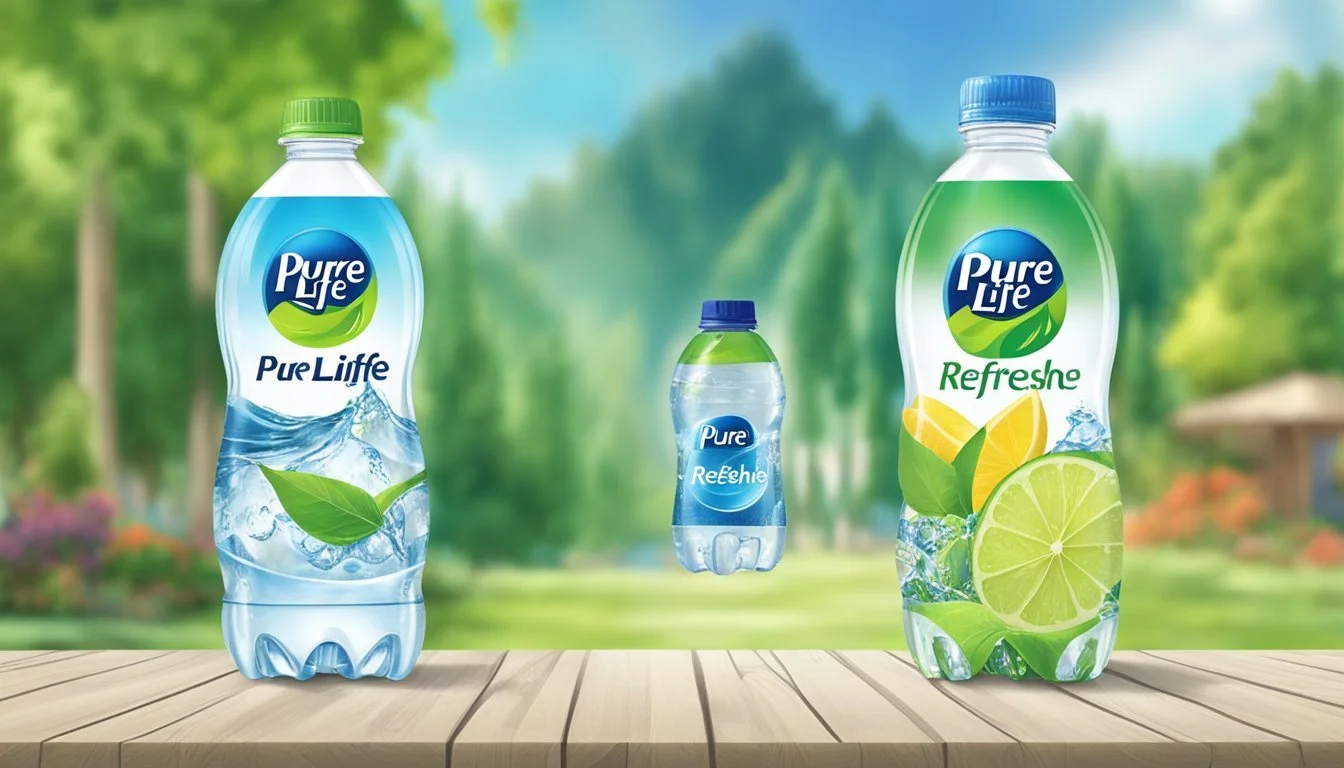Pure Life vs. Refreshe
Detailed Comparison of Bottled Water Quality
When it comes to choosing bottled water, consumers often find themselves deciding between well-known brands like Pure Life and Refreshe. This comparison dives into which of these popular water brands offers better quality, value, and taste. Pure Life, a prominent brand under Nestlé, often finds itself in lists of both best and worst bottled waters due to its mixed reviews on taste and sourcing.
Refreshe, on the other hand, is often praised for its affordability and decent taste profile. Sourced and bottled by regional suppliers, it aims to provide a reliable and consistent experience for its consumers. The competition between these two brands highlights distinct priorities—brand reputation versus cost-effectiveness.
Ultimately, for those who prioritize renowned brand names, Pure Life might seem the preferable choice. However, when considering factors such as price and taste, Refreshe often emerges as the better option. This exploration will cover their origins, benefits, drawbacks, and consumer preferences.
The Bottled Water Industry Overview
The bottled water industry has grown significantly over the past few decades, with major brands contributing to its rapid expansion. This increase is driven by changing consumer preferences towards convenience and perceived health benefits.
Significance of Bottled Water
Bottled water provides a convenient source of hydration, often consumed on the go.
The industry has experienced notable growth, with global sales increasing substantially between 2010 and 2020. This boom reflects a broader trend of consumers seeking healthier beverage options compared to sugary sodas.
Environmental concerns have led to innovations in packaging, with many companies exploring recyclable materials.
Consumers often believe that bottled water offers higher quality and better taste compared to tap water, driving consistent demand.
Major Bottled Water Brands
Nestlé Waters is a dominant player, offering brands like Pure Life, which is enhanced with minerals for taste.
Coca-Cola and PepsiCo also have significant stakes with Dasani and Aquafina, respectively.
Evian and Fiji are known for their premium market positioning and natural spring sources.
Voss and Smartwater cater to upscale markets, often associated with superior purity and distinctive packaging.
Each brand has unique selling points, from local sourcing to added electrolytes, appealing to a broad range of consumer preferences.
This diverse market landscape ensures that consumers have multiple options tailored to different needs and tastes.
Assessing Quality and Purity
Examining Pure Life and Refreshe involves evaluating specific factors like purification processes, mineral content, and pH levels. Each element plays a crucial role in determining overall quality and safety for consumption.
Defining Water Purity
Water purity involves the absence of contaminants and unwanted substances. Pure Life and Refreshe both emphasize rigorous testing to ensure minimal Total Dissolved Solids (TDS).
Contaminants scrutinized include heavy metals, bacteria, and PFAS chemicals.
The brands adhere to FDA Regulations that set safety standards for bottled water. By achieving low levels of harmful substances, consumers can rely on these brands for safe, pure drinking water.
Filtration and Purification Processes
Filtration methods are key to purity. Pure Life uses Reverse Osmosis and Microfiltration to remove contaminants.
Reverse Osmosis eliminates larger particles, while Microfiltration targets finer impurities.
Refreshe implements similar techniques, but may vary slightly in methodology. Both brands aim to exceed standard purification protocols.
Quality control processes ensure consistent results, with regular testing being a standard practice.
Assessing Mineral Content and pH Levels
Mineral content and pH levels are critical for taste and health benefits. Pure Life and Refreshe provide their specific mineral compositions on labels. Essential minerals like calcium and magnesium often contribute to water's palatability and nutritional value.
pH levels are also monitored, typically ranging from 6.5 to 8.5. Balanced pH levels ensure the water isn't too acidic or alkaline, aligning with FDA guidelines.
This balance is vital for maintaining water’s overall quality and consumer safety.
Both brands demonstrate a commitment to providing detailed information regarding their mineral profiles and pH balance, ensuring transparency and informed consumer choices.
Health and Hydration
The benefits of bottled water can vary widely based on its source and mineral content. Key aspects include the role of electrolytes and the differences between spring water and tap water.
The Role of Electrolytes
Electrolytes are crucial for maintaining bodily functions and hydration. Bottled waters like Pure Life and Refreshe contain varying levels of electrolytes such as calcium, magnesium, and potassium.
Electrolytes help regulate muscle function, nerve signaling, and fluid balance. Magnesium and potassium are particularly beneficial for cardiovascular and muscle health. When selecting bottled water, it's important to check the label for the specific electrolytes it contains, as this can impact overall hydration efficacy.
Hydration Benefits of Spring Water
Spring water often comes from natural sources, providing a unique mineral composition. Pure Life and Refreshe may source their water differently, affecting their mineral profiles. Spring water typically contains natural minerals that can enhance taste and health benefits.
Calcium and magnesium in spring water support bone health and metabolic functions. The natural filtration process can also contribute to the purity and freshness of the water, making it a popular choice for those seeking healthy hydration options.
Considerations for Tap Water vs Bottled Water
The debate between tap water and bottled water often revolves around quality and safety. Tap water is usually more cost-effective and is regulated by local health authorities. However, concerns about contaminants and taste often lead consumers to choose bottled water instead.
Bottled water, such as Pure Life and Refreshe, undergoes additional filtration processes and quality checks. This often results in a cleaner taste and perceived higher quality. It is crucial for consumers to consider the source and treatment of the bottled water they choose to ensure they are getting the best health benefits.
Taste Profile Analysis
The flavor differences between Pure Life and Refreshe bottled waters can significantly inform consumer preference. Analyzing the taste profiles involves understanding how variations in water type and mineral content affect flavor.
Understanding Taste Variances
Taste in bottled water is influenced by its source and treatment process. Pure Life is purified water, often derived from municipal sources and enhanced with a light blend of minerals, like sodium and potassium, for taste.
Refreshe, another popular brand, offers both purified and spring water options. Spring water naturally incorporates minerals as it travels through aquifers, leading to a distinct taste compared to purified water.
Alkaline water also adds another layer of complexity. With a higher pH level, typically above 7.5, alkaline variants can taste smoother and less acidic. Consumers often discern subtle differences in flavor based on these mineral compositions and pH levels.
Conducting a Taste Test
Affective taste tests involve blind sampling of different water types. Participants should cleanse their palate with a neutral substance, like plain crackers, between each water sample to avoid flavor carryover.
Create a simple rating scale to evaluate aspects such as aftertaste, freshness, and mouthfeel. For Pure Life, emphasize evaluating its minerally-enhanced profile versus Refreshe's varying offerings, whether purified or natural spring.
During the test, note specific flavor descriptors. Some might describe Pure Life as having a "clean" or "crisp" taste, while Refreshe spring water might be noted for its "earthy" and "natural" flavor. Clear and quantifiable results can help identify which brand better meets consumer preferences.
Environmental and Convenience Factors
When comparing Pure Life and Refreshe bottled water, it's essential to consider their environmental impact and the convenience of using these products. Analyzing factors like plastic versus glass bottles and the role of consumer safety and regulations helps inform better choices.
Bottled Water and Environmental Impact
The environmental impact of bottled water is significant. Producing plastic bottles requires fossil fuels, and many bottles end up in landfills or oceans, causing pollution. Pure Life and Refreshe both primarily use plastic bottles, which take hundreds of years to decompose.
Boxed Water is an alternative gaining attention, using renewable materials and reducing plastic waste. Choosing products with eco-friendly packaging can mitigate environmental damage.
Packaging: Plastic vs Glass Bottles
Plastic bottles are lighter and more convenient but raise concerns about BPA and other chemicals leaching into the water. Pure Life and Refreshe commonly use plastic bottles, which can be recycled but often are not.
Glass bottles, though heavier and more fragile, are inert and safer for long-term storage. They don't leach chemicals and maintain the purity of water. Consumers should consider weight and breakage risks when choosing glass.
The Convenience of Bottled Water
Bottled water offers undeniable convenience. It's portable and readily available, ensuring access to clean water anytime. Pure Life and Refreshe provide easy access to hydration in various sizes suitable for different needs.
In busy lifestyles, grabbing a bottle of water saves time. The widespread availability of bottled water, including these two brands, simplifies meeting daily hydration needs without worrying about water quality.
Brand Analysis: Pure Life vs. Refreshe
Pure Life and Refreshe, two prominent brands in the bottled water market, each boast unique attributes and histories. This section delves into their brand profiles and comparative performance, focusing on key factors from water sourcing to industry reputation.
Nestlé Pure Life: Brand Profile
Nestlé Pure Life is a globally recognized brand known for its extensive distillation process and strong market presence. Established by Nestlé Waters, it emphasizes quality and consistency.
The brand sources its water from multiple locations, ensuring rigorous purification to meet high standards.
Nestlé Pure Life's production process involves several purification steps, including reverse osmosis and mineral addition. This ensures a consistent taste that appeals to a broad audience. The brand's strong reputation in the market is bolstered by its commitment to quality assurance.
Refreshe: Brand Profile
Refreshe, often found in retail stores, is marketed for its affordability and accessibility. Sourced from various springs depending on the region, it emphasizes providing quality water at a lower price point.
Refreshe's quality control, managed by regional bottling partners, maintains consistency across its distribution network. It has steadily gained consumer trust through its reliable product offerings.
Unlike Pure Life, Refreshe does not emphasize an extensive purification process but assures the safety and purity of its water through standard filtration and quality checks. This makes it a popular choice for budget-conscious consumers seeking a reliable brand.
Comparative Analysis
When comparing Nestlé Pure Life and Refreshe, several distinctions emerge. Pure Life excels in its advanced purification techniques, offering a consistent taste profile and global distribution. Its brand reputation is supported by Nestlé's longstanding presence in the food and beverage industry.
Refreshe, while not as globally prominent, provides a cost-effective alternative with satisfactory quality control. Its regional sourcing and straightforward filtration appeal to consumers prioritizing value over extensive purification.
In terms of water source, Pure Life's diverse sourcing and rigorous purification provide a premium product. Refreshe's simpler approach focuses on accessibility. Each brand has carved out its market niche, catering to different consumer preferences and priorities.
Consumer Insights and Final Recommendations
Consumers often base their bottled water choices on taste, health benefits, and environmental impact. Understanding these preferences can help make a more informed choice between Pure Life and Refreshe.
Consumer Reviews and Preferences
Consumers frequently highlight the taste and mineral content when reviewing bottled water. Many prefer Pure Life for its consistent taste and added minerals, which create a familiar profile across different regions.
Refreshe, though less talked about, is appreciated for its clean, crisp flavor. Some consumers are also attracted by its affordable pricing and availability in bulk. Both brands have their loyal followers, each valuing different aspects of bottled water.
How to Choose the Best Bottled Water
When selecting bottled water, consider factors like mineral content and water source. Pure Life undergoes a detailed purification process, including demineralization and the addition of minerals for taste, ensuring clean drinking water.
Refreshe sources its water from various springs, providing a natural mineral content. Evaluating the environmental impact of the packaging and transportation can also guide the decision, as sustainable practices are becoming increasingly important to consumers.
Expert Recommendations
Experts suggest prioritizing health and quality. Pure Life's rigorous filtration and added minerals make it a reliable choice for consistent mineral content and taste.
Refreshe, with its spring water origins, offers a more natural taste that some experts might favor. Considering the brand's reputation and consumer trust can further support a well-rounded decision.
Reviewing these insights can assist consumers in selecting the most suitable bottled water for their needs.
More About Pure Life
Cascade Mountain vs Pure Life: Which Bottled Water is Better?
Hawaii Volcanic vs Pure Life: Which Bottled Water is Better?
Hawaiian Springs vs Pure Life: Which Bottled Water is Better?
Icelandic Glacial vs Pure Life: Which Bottled Water is Better?
Nestle Pure Life vs Pure Life: Which Bottled Water is Better?
Pure Life vs Kirkland Signature: Which Bottled Water is Better?
Pure Life vs Whole Foods 365: Which Bottled Water is Better?
Richard's Rainwater vs Pure Life: Which Bottled Water is Better?
Solan de Cabras vs Pure Life: Which Bottled Water is Better?
Talking Rain AQA vs Pure Life: Which Bottled Water is Better?
Whole Foods Italian Still Mineral water vs Pure Life: Which Bottled Water is Better?
More About Refreshe
Cascade Mountain vs Refreshe: Which Bottled Water is Better?
Hawaiian Springs vs Refreshe: Which Bottled Water is Better?
Icelandic Glacial vs Refreshe: Which Bottled Water is Better?
Mountain Valley Spring Water vs Refreshe: Which Bottled Water is Better?
Nestle Pure Life vs Refreshe: Which Bottled Water is Better?
Refreshe vs Kirkland Signature: Which Bottled Water is Better?
Richard's Rainwater vs Refreshe: Which Bottled Water is Better?
Talking Rain AQA vs Refreshe: Which Bottled Water is Better?
Whole Foods Italian Still Mineral water vs Refreshe: Which Bottled Water is Better?






